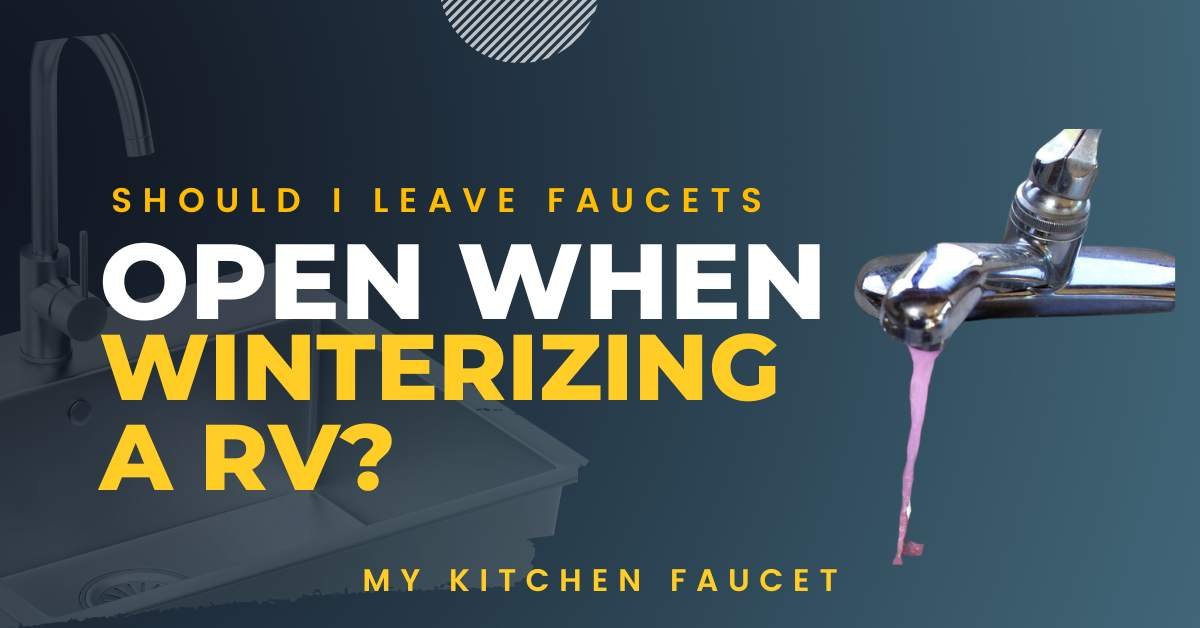Winterizing your RV is an key step to protect your investment from the harsh winters. One of the key questions that often arises during this process is: Should you leave faucets open when winterizing an RV? The answer is yes; you should leave the faucets open when winterizing your RV. This practice helps to prevent the pipes from freezing and bursting by allowing any remaining water to expand without causing damage.
Quick Summary
Leaving faucets open during winterization helps prevent pipe damage.
Ensures any residual water can expand and escape.
Important for both indoor and outdoor faucets.
Complement this with other winterization steps like draining and using antifreez
Why Leave Faucets Open When Winterizing an RV?
Leaving faucets open when winterizing your RV is a preventive measure against the freezing of any water that might remain in the plumbing system. Water expands when it freezes, and if trapped inside pipes, it can cause them to crack or burst. By leaving the faucets open, you provide an escape route for the expanding water, which reduces the risk of damage to your plumbing system.
Outdoor Faucets and Winterization

Specifically, it is crucial to leave outdoor faucets open. Outdoor faucets are more exposed to the cold, and any trapped water in these lines can freeze more quickly. When you ask, should you leave outdoor faucets open during winter? The answer is an emphatic yes. Open faucets will ensure any residual water can escape, reducing the risk of ice formation and subsequent damage.
Dripping Faucets
Another common question is whether you should leave faucets dripping. While this practice is often recommended for household plumbing to prevent freezing, it is not typically necessary for an RV if you have properly drained and winterized the system. However, if you are unsure whether all the water has been removed, leaving faucets dripping slightly can provide an added protection against freezing.
Steps to Properly Winterize Your RV Plumbing System
- Drain the Water System: Begin by draining all water tanks, including the fresh water tank, gray water tank, and black water tank. Open all faucets, both hot and cold, to allow water to flow out completely.
- Blow Out the Lines: Use an air compressor to blow out any remaining water from the lines. Attach the compressor to the water inlet and blow air through the system until no more water comes out of the faucets.
- Add RV Antifreeze: Pour non-toxic RV antifreeze into the plumbing system. This antifreeze is specially designed to be safe for RV plumbing and will prevent any remaining water from freezing. Make sure to run the antifreeze through all faucets, including the shower and toilet.
- Leave Faucets Open: After adding antifreeze, leave all faucets open. This will ensure that any expanding ice has a way to escape, preventing pressure build-up and potential pipe damage.
- Outdoor Faucets: Ensure that outdoor faucets are also left open. These are the most vulnerable to freezing temperatures, and leaving them open will prevent trapped water from causing damage.
Should You Leave Faucets Open When the Water Is Turned Off?
Yes, you should leave faucets open when the water is turned off during winterization. This practice ensures that any residual water left in the system can expand and escape as it freezes. It reduces the risk of pressure build-up that leads to burst pipes and costly repairs.
Additional Tips for Winterizing Your RV
- Inspect Seals and Insulation: Check all door and window seals for any gaps or cracks. Proper insulation will help maintain internal temperatures and reduce the risk of freezing pipes.
- Cover Vents and Windows: Use vent covers and window insulation to prevent cold air from entering the RV. This will help keep the interior warmer and protect your plumbing system.
- Monitor Weather Conditions: Keep an eye on the weather forecast. If extreme cold is expected, take extra precautions to ensure your RV is fully winterized and protected.
- Store Your RV Properly: If possible, store your RV in a covered or indoor facility. This will provide it an additional protection from the elements and reduce the risk of freezing.
Conclusion
In conclusion, leaving faucets open when winterizing your RV is a critical step to protect your plumbing system from the harsh winter conditions. It allows any remaining water to expand and escape without causing damage to the pipes. Whether you are dealing with indoor or outdoor faucets, this practice is essential for proper winterization.
Complement this step with draining, blowing out lines, and adding RV antifreeze to ensure your RV is well-prepared for the winter months. Proper winterization will save you from costly repairs and ensure that your RV is ready for use when the warm weather returns.





